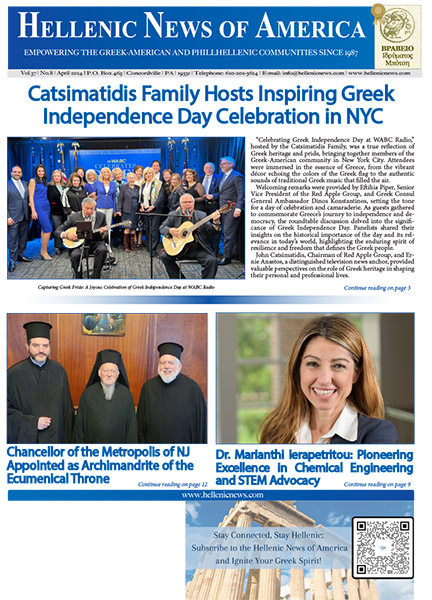Frankly Speaking
Commentaries on Church, Culture and Commerce
“Vision is the ability to see beyond our present reality, to create, to invent what does not yet exist, to become what we not yet are. It gives us capacity to live out of our imagination instead of our memory.”
~ Stephen Covey
According to an Angus Reid Public Opinion Poll (2012) 30% of Americans believe in the reality of Sasquatch. At the very least, respondents believe that there is a “strong likelihood” that a big-footed Gigantopithecus (Greek meaning “giant ape”) exists. Whatever the case, thousands of individuals are willing to spend $300-$500 to attend weekend Sasquatch Search Expeditions, highlighted by moonlight yodeling rambles into remote regions of America. Sadly, despite all the grainy photos, murky video clips, genetic tests, and incisive backwoods forensics, indisputable evidence of the hairy nocturnal creature’s existence by the “Finding Big Foot Generation” has, as yet, not been adequately confirmed.
Belief in monstrous men and wild kindred creatures can be traced back to the 18th century (BC) Mesopotamian Epic of Gilgamesh. In 500 BC, the Historian Herodutus spoke about giant hairy ogres living in Lybia. Ancient Greco-Roman mythology additionally indicated the existence of half man, half beast creatures known as Satyrs. The more modern American Bigfoot phenomenon began in 1958, when a man named Jerry Crew received national media attention for displaying a pair of plaster cast enormous feet. Ten years later, Roger Patterson and Robert Gimlin brandished a short strip of blurry film that captured what appeared to be a “big footed” hairy creature sauntering along a secluded river bank in Bluff Creek, California. Since then, debate over the authenticity of the massive footprints and coarse images rage on.
Apart from the Western hemisphere, Sasquatch sightings have been reported throughout the globe for centuries. In addition to the more familiar monikers, international appellations commonly used to identify the legendary Cryptid (Greek meaning “to hide”) include: Skookum, Grassman, Yeren, Almas, Orang Pendak, Yowie, Yeti, and Nessie. Owing to the growing interest in the subject, the Bigfoot Field Research Organization (BFRO), the first major entity dedicated to the scientific study of Sasquatch, was established in 1995. While the organization’s mission is to derive credible and conclusive empirical documentation of the species’ existence, membership into the BFRO is by invitation and only after attending one of its organized expeditions.
Notwithstanding the publication of scientific backpack investigations, Youtube, Twitter, and other Weblog debates evidence the increasing public and commercial interest with Sasquatch. In fact, the Olympia Brewing Company has a standing offer of $1 million dollars for anyone who can capture the elusive creature. Olympia is also a financial supporter of the Falcon Project, which will use flying drones to search for the primate from the sky. Finally, the popular Animal Planet television series called Finding Bigfoot, chronicling the investigations of four researchers seeking proof of the allegedly Criptid’s existence in the wildernesses of the United States and Canada, has recently entered is fifth syndicated season.
What is the reason for the apparent global interest with Sasquatch? Is the search for Sasquatch galvanized by the need to solve a scientific mystery or by the lust for media attention and fortune? What motivates so many scientists and academics to risk their careers in pursuit of contemporary Gilgameshs? What inspires the typical Sasquatch enthusiast, and what, if anything, can Big Foot stalkers teach religious, civic, and business leaders about the value of intrinsic motivation?
According to management experts Jim Collins and Jerry Porras (Built to Last, 1994) the capacity of motivation is proportional to the magnitude of an organization’s strategic vision. In other words, the bigger and more aspirational the vision, the greater it’s motivational octane. Unlike Sasquatch seekers, the problem with most organizations is the bantam of their weak intentional visions. In contrast, “great” and “long-lasting” organizations have what Collins and Porras circumscribe as the “Big Hairy Audacious Goal.” As such, a high-quality BHAG (pronounced BEE-hag) delineates a 10 – 30 year envisioned future that is: (a) clear and compelling, (b) a unifying focal point of effort, and (c) a clear catalyst for team spirit (Built to Last: Successful Habits of Visionary Companies, 1994).
Understood in this fashion, Big Foot followers, Yeti hunters, and “Squatchers” – as they refer to themselves – are more than weekend coppice voyeurs and/or eccentric Crypto-zoologists. They are a diverse group of linguistics experts, anthropologists, biologists, and ordinary, yet passionate individuals, united by an affinity for adventure, camouflage, and a fascination with all things “squatch.” They are explorers in search of the extraordinary, whose preoccupation actually discloses the value of intrinsically motivated models of leadership. Unlike unicorn, space alien, and vampire foragers, Squatchers are, paradoxically, characterized by a Big and Hairy Vision that provides the intrinsic motivation for spending one’s life in pursuit of something – or someone – that is actually larger than themselves.
Vision that is based on a BHAG is a powerful motivational force – especially when its aspirations suitably exceed an organization’s current grasp. It provides the drive, push, and inspiration for acceding its invitation. In its simplest form, it provides the motivational driving force(s) that convert thoughts and desires into behaviors. Authentic leaders understand the need to engage followers and constituents in such a fashion. As such, they do everything in their power to identify the purpose of their vision and the hypothetical constructs that will later be used to motivate and inspire.
Understood in such a fashion, the intrinsic nature of motivation is nurtured as the primary force that initiates, guides and maintains goal-oriented behaviors. Without motivation, direction, courage, energy, and persistence towards a goal decrease. Alternatively, when motivation is strengthened by a Big Hairy and Audacious Goal(s) that provides clear and compelling mental images of future aspirations, it awakens inner strength, and leads to improve productivity, efficiency, and inspirational power. Apart from identifying direction and purpose that reflects an organization’s unique core values and strengths, a well articulated BHAG vision inspires enthusiasm and calls for a shared commitment by challenging people to align their energies in a common direction.
Researchers proffer a number of different theories to explain motivation. A partial listing would include: (a) instinct, (b) incentive, (c) drive, (d) arousal, and (e) cognition. Although numerous psychological constructs exist, research delineates two primary types: (a) external, and (b) internal. Generally speaking, motivation that comes from the outside is known as external or extrinsic and involves the reception of some kind of reward that is external to the process of participation. On the other hand, when individuals participate because they find involvement interesting, stimulating, and enjoyable without being preoccupied by external rewards, their motivation is predominantly internal or intrinsically motivated.
In his latest book, Drive (2009), author Daniel Pink advocates the inspirational preeminence of intrinsic motivation. Using research from noted MIT studies, Pink argues that traditional external motivators like year-end bonuses can only elicit better performance from people doing rote tasks. However, once brainpower is no longer required, higher financial rewards fail to produce better work, but, in fact, actually inspire worse performance. As an alternative, Pink identifies three key intrinsic motivators that leaders should develop in their employees and constituents: (a) autonomy, (b) mastery, and (c) purpose (serving a greater vision).
Three Pillars of Intrinsic Motivation
| Intrinsic Motivators | Description |
|
The freedom to choose within a framework of interdependence. Behaving with a full sense of volition and choice as opposed to feeling pushed around by external pressure toward specific outcomes (Drive, p. 88). |
|
A growth mindset, a way of thinking about one’s work that requires both effort and engagement. An asymptote, an impulse that moves toward an ideal of perfect oneness without ever fully achieving it (Drive, pp. 118, 122, & 124). |
|
The connection of excellence to a higher purpose. A sense of being connected to the why of what one is doing (Drive, p. 233). |
Pink’s Pillars of Intrinsic Motivation are further reinforced by a 2010 Harvard University study on motivation. After tracking 1200 knowledge workers, researchers discovered that the primary driver of employee performance was purpose, the feeling that they were moving forward and achieving a greater goal. According to the study’s conclusions, when workers have a sense that they are making headway and receiving support to overcome obstacles, their emotions were “most positive” and their drive to succeed was “at its peak.” On the other hand, when employees felt that they were spinning their wheels or encountering roadblocks to meaningful attainment of their institutions’ vision, their moods and motivation “were at their lowest.”
According to James M. Kouzes and Barry Z. Posner “being forward-looking, envisioning exciting possibilities and enlisting others in a shared view of the future, is the attribute that most distinguishes leaders from non-leaders” (The Leadership Challenge, 1987; 2012). As counterintuitive as it might seem, the authors insist that the best way to lead people into the future is to connect with them deeply in the present. The only visions that take hold are shared visions created as a result of careful listening, appreciation of hopes, and attention to constituent needs. The best leaders are able to bring their people into the future because they engage in the oldest form of research, namely, the study of the human condition.
Like Pink, Kouzes and Barry, Lee Bolman and Terrence Deal underscore that notion that along with the lenses of structure, people, and politics it is vital for leaders to also satisfy their respective organization’s thirst for “soul and spirit” (How Great Leaders Think: The Art of Reframing, 2014). By collaborating with constituents towards such redress, leaders become “magicians” who “fill the gap and spiritually bond of an organization” through the articulation of a shared destiny. According to Bolman and Deal, by providing the motivational charm of a Big Hairy Audacious Goal effective leaders are able to “infuse magic” and serve “as icons” of an organization’s values and spirit.”
In the final analysis, great achievers in history are characterized by the “magic” of having a clear vision of what they wanted to achieve. The famous sculptor Michelangelo, for example, is noted for having an artistic vision that provided him the ability to see what was “hidden” in otherwise unpretentious quarried stone. It was the ability to see the vivid image in his mind and soul that propelled the famed Italian artisan to “release” the heroic David from the marble. While others could only see a rough slab, Michelangelo envisioned an Old Testament persona that needed to be set free. The result was a 17’ masterpiece of Renaissance sculpture chiseled by the intrinsic power of Big Vision.
Like Michelangelo, religious, civic, and business leaders should tap into the motivational drive that a Big Hairy Audacious Goal can engender in themselves, constituents, and followers. While stimulating others to stretch their minds, bodies and souls towards the “release” of their respective faith, business, and personal life aspirations, however, they should understand that Big Vision can rarely be reduced to measurable evidence. Perhaps this is the reason why numerous social psychologists studying the current Sasquatch phenomenon suggest that most Big Foot seekers are in no hurry to “solve” the mystery of their concentration. In fact, some researchers confidently hypothesize that if/when the existence of a Nessie, and/or Abominable are finally documented, the fascination with even the most accessible of midnight ventures will most certain diminish.
The Search for Sasquatch should not be interpreted as a pursuit of cheap weekend thrills or big and hairy mythological monsters. On the contrary, the large footprints that countless generations have relentlessly followed epitomize humanity’s noble quest for the mysterious and extra-ordinary – a “Magic” – that resides in the dark forests of the human psyche, waiting for the visionary to release! To quote the famous Catholic mystic Thomas Merton, vision is “a labor beyond all desire . . . a fulfillment whose limits extend to infinity.”





